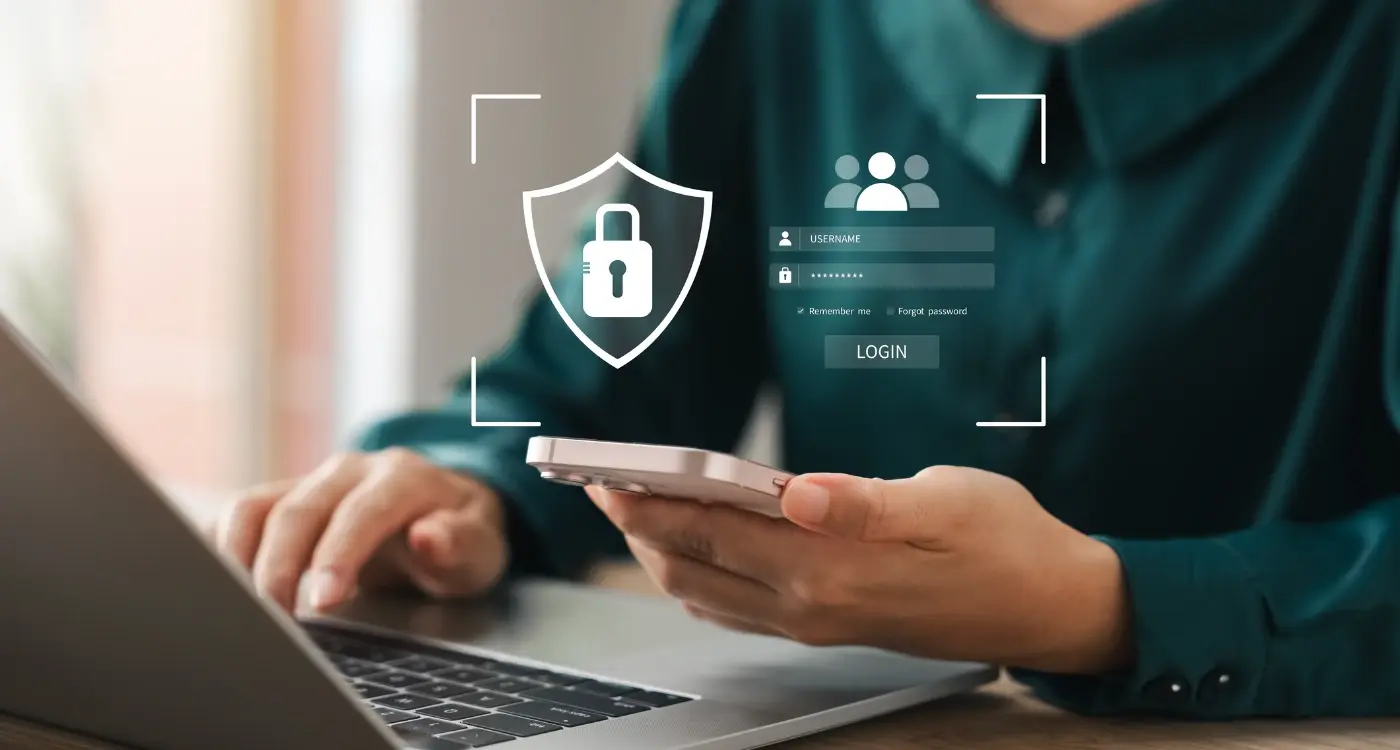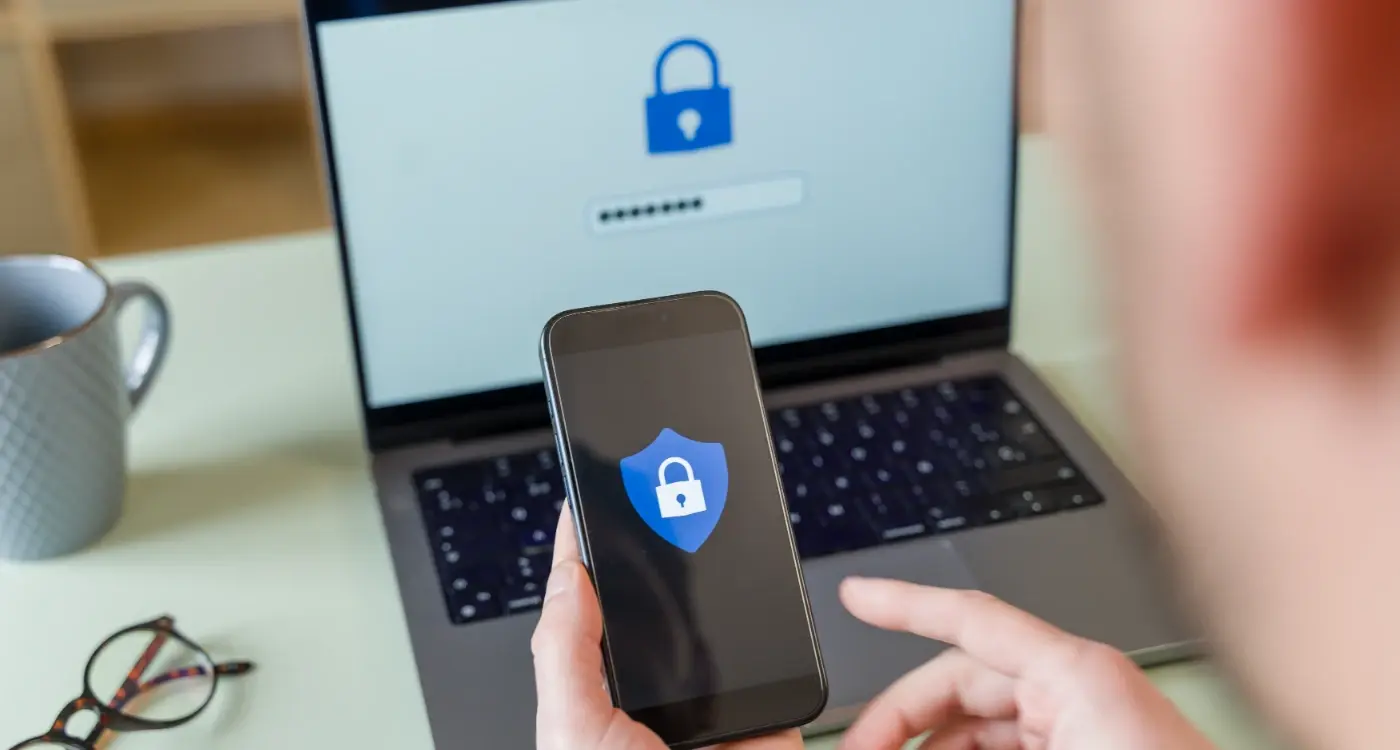What Security Standards Should Your Development Platform Meet?
Picture this: you're three months into development when your client suddenly asks about SOC 2 compliance, or worse—your app gets rejected from the store because it doesn't meet basic security standards. I've watched countless development teams scramble at the last minute, trying to retrofit security measures into platforms that were never built with them in mind. It's expensive, time-consuming, and frankly, completely avoidable if you know what to look for from day one.
Here's the thing about security standards in development platforms—they're not just nice-to-have features anymore. They're table stakes. Whether you're building a simple productivity app or handling sensitive financial data, your chosen platform needs to meet certain baseline requirements. The problem is, most people don't realise this until it's too late; they get caught up in fancy features and forget about the boring (but absolutely necessary) security foundations.
Security isn't a feature you can bolt on later—it needs to be baked into every decision you make about your development platform from the very beginning.
That's exactly what this guide is about. We'll walk through the key security standards your development platform should meet, from basic authentication requirements to complex compliance frameworks. No technical jargon, no overwhelming lists—just practical guidance on what matters and why. By the end, you'll know exactly what questions to ask potential platform providers and how to spot the red flags before they become expensive problems. Because trust me, dealing with security properly from the start is far easier than explaining to your users why their data got compromised.
Understanding Basic Security Concepts
Security in mobile app development isn't rocket science, but it does require understanding some key ideas. Think of security as building a house—you need solid foundations, strong walls, and good locks on the doors. Every app handles some kind of information, whether that's user passwords, personal photos, or payment details, and keeping that information safe is what security is all about.
The Three Main Security Goals
When we talk about app security, we're really talking about three main things. First is confidentiality—making sure only the right people can see information. Second is integrity—ensuring data doesn't get changed or corrupted by mistake or on purpose. Third is availability—making sure your app works when people need it to work. These three concepts form the backbone of everything else we'll discuss.
Common Security Threats
Apps face different types of threats every day. Some hackers try to steal user information; others want to break into systems to cause damage or steal money. Then you have more subtle problems like coding mistakes that create security holes without anyone realising. The good news? Most of these problems can be prevented with the right approach.
What makes mobile app security tricky is that your app doesn't live in just one place—it runs on people's phones, connects to servers over the internet, and often talks to other services. Each connection point creates a potential weak spot that needs protection. Understanding these basics helps you make smarter decisions about which security measures your development platform should include.
Authentication and Access Control
Authentication and access control form the backbone of any secure development platform. Think of authentication as checking someone's ID at the door—you need to verify they are who they claim to be before letting them in. Access control then decides what rooms they can enter once they're inside.
Your development platform should support multi-factor authentication (MFA) as standard. This means users need more than just a password to get access—they might need a code from their phone or a fingerprint scan too. Single sign-on (SSO) integration is equally important, allowing teams to use their existing company credentials rather than managing yet another set of login details.
Role-Based Access Control
Not everyone on your development team needs access to everything. Your platform should offer granular permission settings where you can assign different roles to different people. A junior developer might only need access to specific code repositories, whilst a senior architect could have broader system permissions.
Always follow the principle of least privilege—give people the minimum access they need to do their job, nothing more.
Session Management
Proper session management prevents unauthorised access when someone steps away from their computer. Look for platforms that automatically log users out after periods of inactivity and require re-authentication for sensitive operations. Session tokens should expire regularly and be properly encrypted during transmission.
Your chosen platform should also maintain detailed audit logs of who accessed what and when. This isn't just about security—it's about accountability and compliance too. These logs become invaluable when investigating security incidents or demonstrating platform compliance to auditors.
Data Protection and Encryption
Data protection is like having a really strong safe for all your app's information—but instead of gold coins, we're protecting user passwords, personal details, and business data. Your development platform needs to handle this stuff properly because one data breach can destroy years of hard work and trust.
The foundation starts with encryption at rest and in transit. At rest means when data sits on servers doing nothing; in transit means when it travels between your app and servers. Think of encryption as turning readable information into scrambled nonsense that only authorised systems can decode. Your platform should support AES-256 encryption as a minimum—anything less is asking for trouble.
Database Security Standards
Your database needs proper encryption, access controls, and regular backups. Field-level encryption protects sensitive data even if someone gains database access. The platform should also support encrypted backups stored in separate locations—because disasters happen and you don't want to lose everything in one incident.
Key Management Systems
Managing encryption keys properly is where many platforms fall short. Your development platform should include secure key generation, rotation, and storage. Keys shouldn't be stored alongside encrypted data; that's like leaving your house key under the doormat. Look for platforms that integrate with dedicated key management services or provide hardware security modules.
Data retention policies matter too. Your platform should allow you to automatically delete old data and provide audit trails showing what happened to user information. This isn't just good practice—it's often legally required under privacy regulations like GDPR.
Network Security Requirements
Network security for mobile apps isn't just about keeping the bad guys out—it's about making sure your entire communication pipeline stays clean and trustworthy. When your app talks to servers, APIs, or other services, that conversation needs to happen through secure channels that protect both your users and your business data.
Transport Layer Protection
Every single piece of data that leaves your app should travel through encrypted connections. TLS (Transport Layer Security) isn't optional anymore; it's the baseline expectation. Your development platform needs to enforce HTTPS for all communications and refuse to work with anything less secure. Certificate pinning adds another layer of protection by making sure your app only trusts specific, verified certificates—think of it as checking someone's ID twice before letting them in.
API Security Standards
Your APIs are like doorways into your system, and each one needs proper security measures. Rate limiting stops attackers from overwhelming your servers with requests, whilst input validation ensures only clean, expected data gets through. OAuth 2.0 and similar authentication protocols help verify that requests are coming from legitimate sources.
The weakest link in network security is often the connection between your app and your backend services—securing this communication channel is non-negotiable
Network monitoring capabilities should be built into your platform from day one. You need visibility into traffic patterns, failed connection attempts, and unusual behaviour. When something goes wrong—and it will—having detailed logs makes the difference between a quick fix and hours of detective work trying to figure out what happened.
Code Quality and Vulnerability Management
Writing secure code isn't just about avoiding obvious mistakes—it's about building a culture where quality and security work hand in hand. I've seen too many development teams treat security as an afterthought, something to bolt on at the end of a project. That approach never works well, and it certainly doesn't scale when you're dealing with sensitive user data or mission-critical applications.
Your development platform needs robust tools for catching vulnerabilities before they make it into production. This means automated code scanning, dependency checking, and regular security audits built right into your development workflow. The best platforms will flag potential issues as developers write code, not weeks later during a manual review.
Code Quality Standards Your Platform Should Enforce
- Automated static analysis scanning for common vulnerabilities like SQL injection and cross-site scripting
- Dependency vulnerability checking that alerts you when third-party libraries have known security flaws
- Code review processes that require security sign-off before deployment
- Regular penetration testing capabilities or integration with security testing tools
- Version control systems that track all changes and maintain audit trails
Managing Vulnerabilities Effectively
When vulnerabilities are discovered—and they will be—your platform needs a clear process for handling them. This includes categorising threats by severity, tracking remediation efforts, and maintaining a database of known issues. The platform should also provide rollback capabilities so you can quickly revert to a secure state if needed.
Remember, vulnerability management isn't a one-time activity. It's an ongoing process that requires constant attention and regular updates to your security tools and processes. The platform you choose should make this as straightforward as possible.
Compliance Framework Standards
When I'm working with clients on their development platforms, compliance framework standards often feel like the most intimidating part of the security puzzle. But here's the thing—they're actually your best friend once you understand what they're asking for. These frameworks aren't there to make your life difficult; they're roadmaps that tell you exactly what security standards your platform needs to meet.
The big players in compliance frameworks include ISO 27001, SOC 2, and GDPR for data protection. Each one has specific requirements that your development platform must satisfy. ISO 27001 focuses on information security management systems, whilst SOC 2 looks at how you handle customer data. GDPR, well, that's all about protecting personal information for anyone in Europe.
Key Framework Requirements
Different industries have different compliance needs, and your development platform should be flexible enough to handle multiple requirements. Here's what most frameworks expect:
- Regular security assessments and audits
- Documented security policies and procedures
- Employee training and access controls
- Incident response and reporting procedures
- Data retention and deletion policies
- Third-party vendor security assessments
Start by identifying which compliance frameworks apply to your industry and target markets before choosing a development platform. This will help you ask the right questions during vendor evaluations.
Platform Compliance Features
Your development platform should provide built-in compliance support rather than leaving you to figure it out alone. Look for platforms that offer automated compliance reporting, audit trails, and policy enforcement tools. The best platforms will actually help you maintain compliance rather than just claiming they support it.
Remember, compliance isn't a one-time checkbox exercise—it's an ongoing process that requires continuous monitoring and updates. Your platform should make this manageable, not overwhelming.
Third-Party Integration Security
Third-party integrations are everywhere in modern mobile apps—payment processors, social media logins, analytics tools, cloud storage services. The list goes on and on. But here's the thing: every single integration you add creates a potential security risk. It's like adding new doors to your house; each one needs proper locks and security checks.
When you integrate with external services, you're trusting them with your users' data and your app's security. That trust needs to be earned through proper vetting. Before adding any third-party service, check their security certifications, read their privacy policies, and understand exactly what data they'll access. Don't just assume they're secure because they're popular or well-known.
Key Security Measures for Third-Party Integrations
The most critical aspect is API security. Always use HTTPS connections—never HTTP. Implement proper authentication tokens that expire regularly, and never store API keys directly in your app's code where they can be extracted. Use secure server-side proxy endpoints instead.
- Validate all data received from third-party services before processing
- Limit the scope of permissions you grant to external services
- Regularly audit and update your integrated services
- Monitor third-party service uptime and security incidents
- Have backup plans if critical integrations fail
Managing Integration Dependencies
Keep track of all your third-party dependencies and their versions. Outdated libraries often contain known security vulnerabilities that hackers actively exploit. Set up automated alerts for security updates and patches. When a security issue is discovered in one of your integrated services, you need to know about it immediately—not weeks later.
Remember that your app's security is only as strong as its weakest integration. Choose your third-party partners wisely and maintain them properly.
Monitoring and Incident Response
Having robust security standards means nothing if you can't spot when something goes wrong. Your development platform needs proper monitoring systems that watch for unusual activity 24/7—think of it as having security cameras that never sleep. These systems should track login attempts, code changes, data access patterns, and any suspicious behaviour that might indicate a security breach.
Most platforms worth their salt will include automated alerts that notify your team when something looks off. Failed login attempts, unusual download patterns, or unexpected system access should all trigger immediate notifications. The key is setting these alerts at the right sensitivity level; too sensitive and you'll get bombarded with false alarms, too relaxed and you might miss real threats.
Building Your Response Plan
When an incident happens—and it will happen eventually—you need a clear plan of action. Your development platform should support quick isolation of affected systems, immediate user notifications, and detailed logging of what occurred. Speed matters here; the faster you can respond, the less damage you'll face.
The average time to identify a data breach is 287 days, but with proper monitoring and incident response procedures, this can be reduced to just hours or days
Your platform compliance depends heavily on how well you handle incidents. Most security standards require documented response procedures, regular testing of these procedures, and post-incident reviews to prevent similar issues. Don't forget that secure coding standards often include requirements for logging and monitoring capabilities built right into your applications—it's not just about external monitoring tools.
Conclusion
Security isn't something you can just tick off a list and forget about—it's an ongoing commitment that needs to be woven into every part of your development process. Throughout this guide, we've covered the building blocks that make a platform truly secure, from basic authentication right through to incident response planning.
The standards we've discussed aren't just theoretical concepts; they're practical requirements that can make or break your app's success. Data breaches don't just cost money—they destroy trust, and rebuilding that trust takes years. When you're choosing a development platform, these security measures should be non-negotiable.
What strikes me most about security is how interconnected everything is. Your encryption means nothing if your access controls are weak. Your monitoring systems are pointless if you can't respond to incidents properly. Strong network security won't help if your third-party integrations are vulnerable. It all works together.
The platforms that get security right are the ones that think about it from day one, not as an afterthought. They build it into their architecture, their processes, their culture. They understand that compliance frameworks aren't bureaucratic obstacles—they're roadmaps to better security practices.
As you evaluate development platforms, don't just ask if they meet these standards. Ask how they implement them, how they test them, how they keep them up to date. The best platforms will be happy to explain their approach because they know security is a selling point, not something to hide. Your users are counting on you to make the right choice.
Share this
Subscribe To Our Learning Centre
You May Also Like
These Related Guides

What Are the Best Enterprise App Encryption Methods?

What Security Features Do Enterprise Apps Need?



